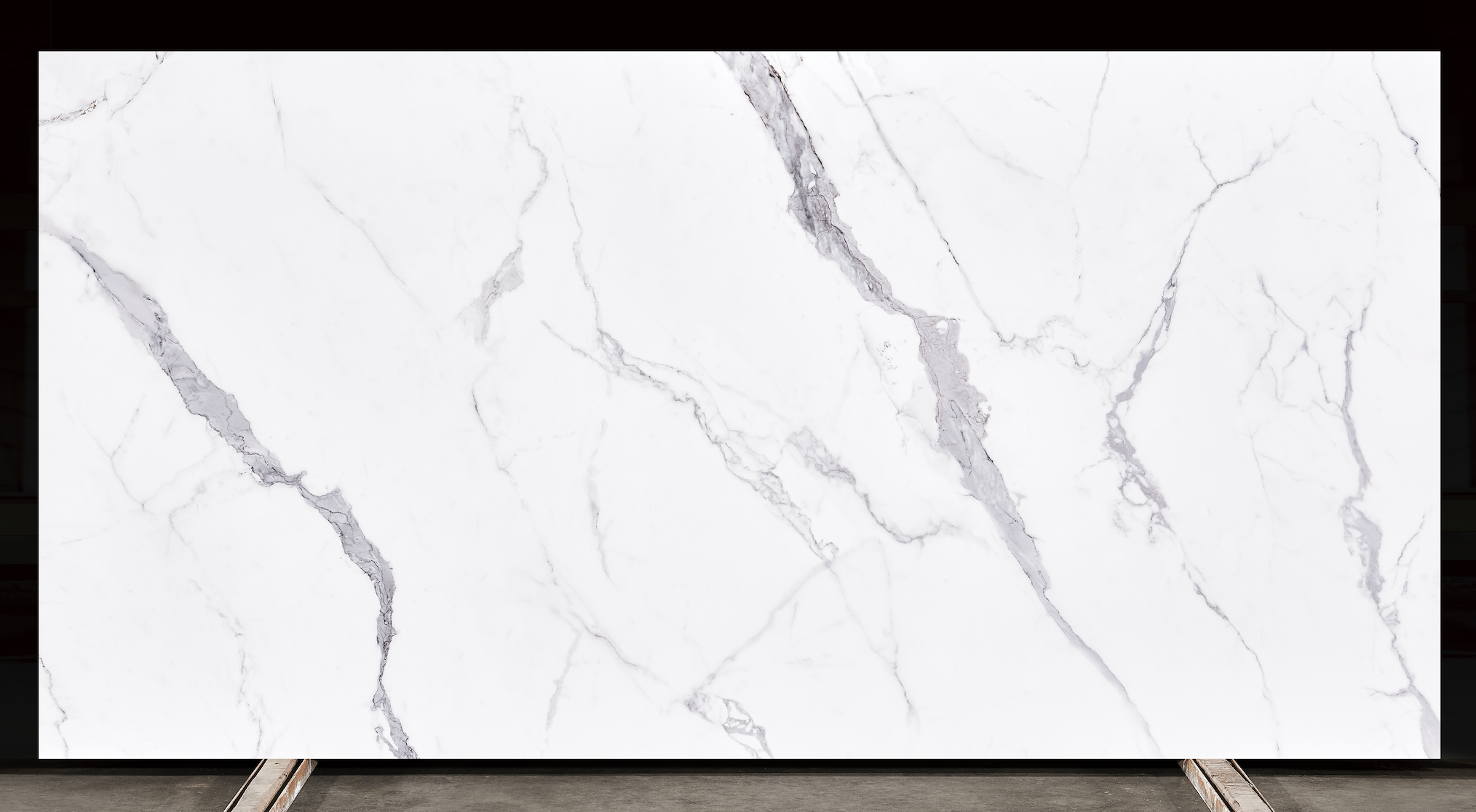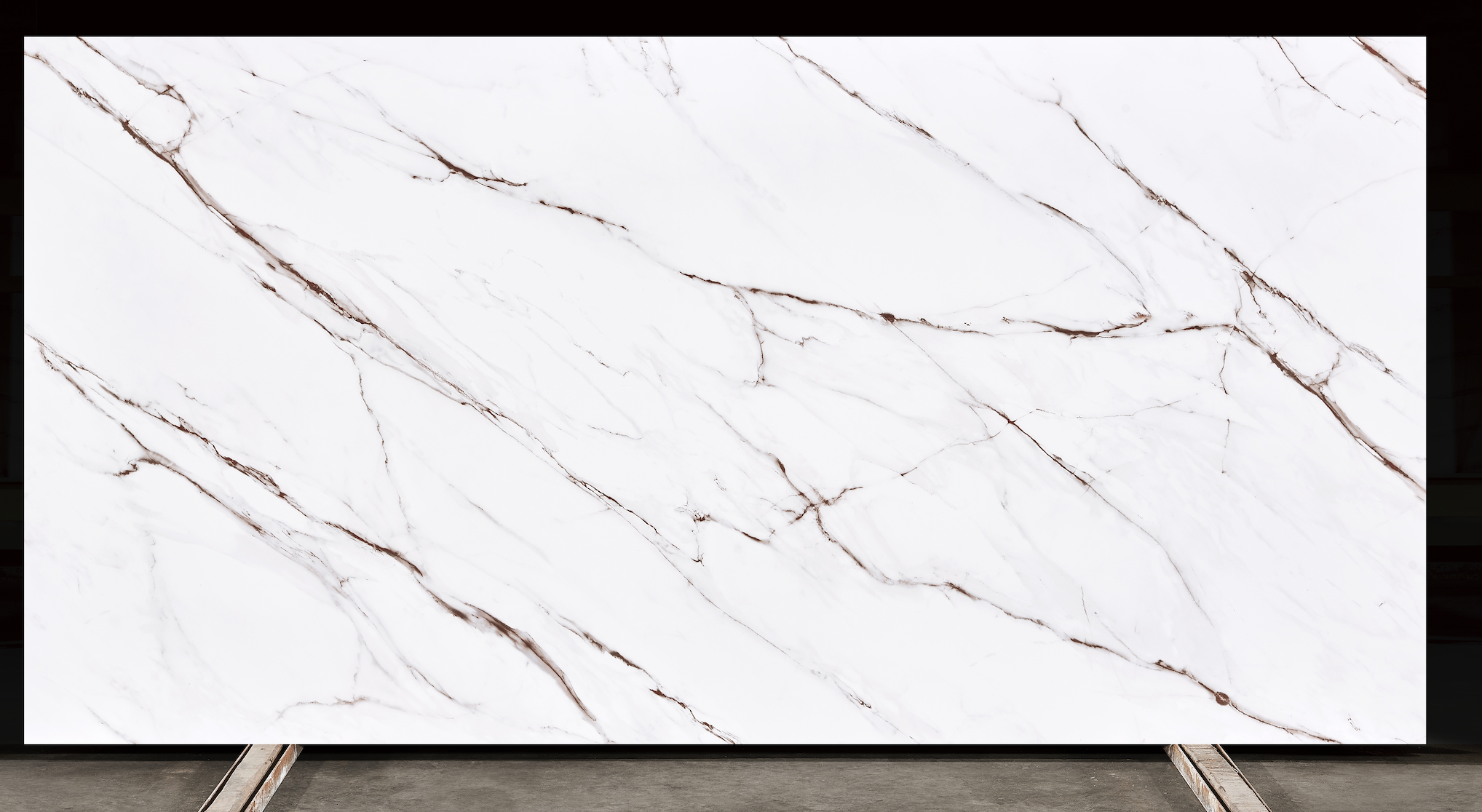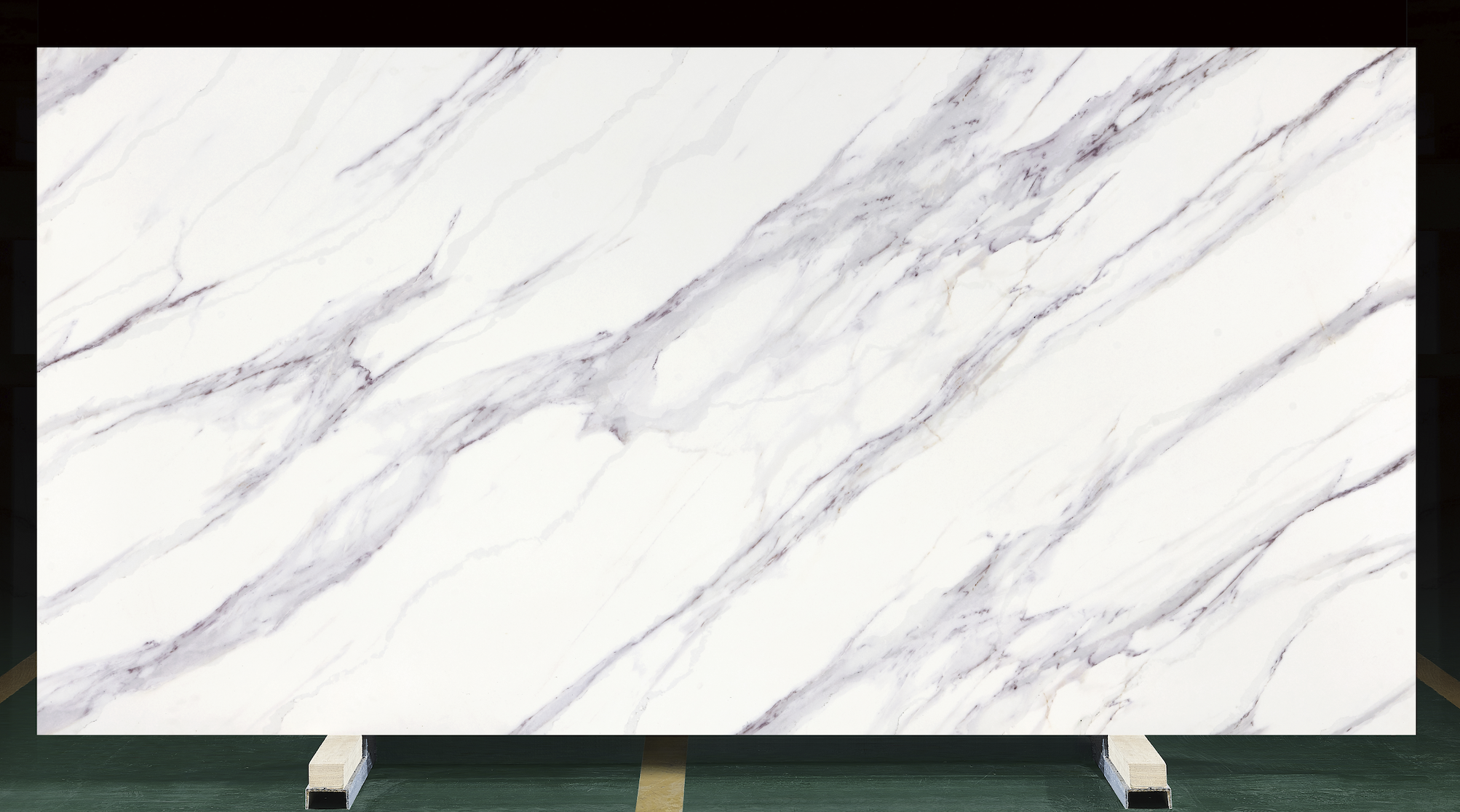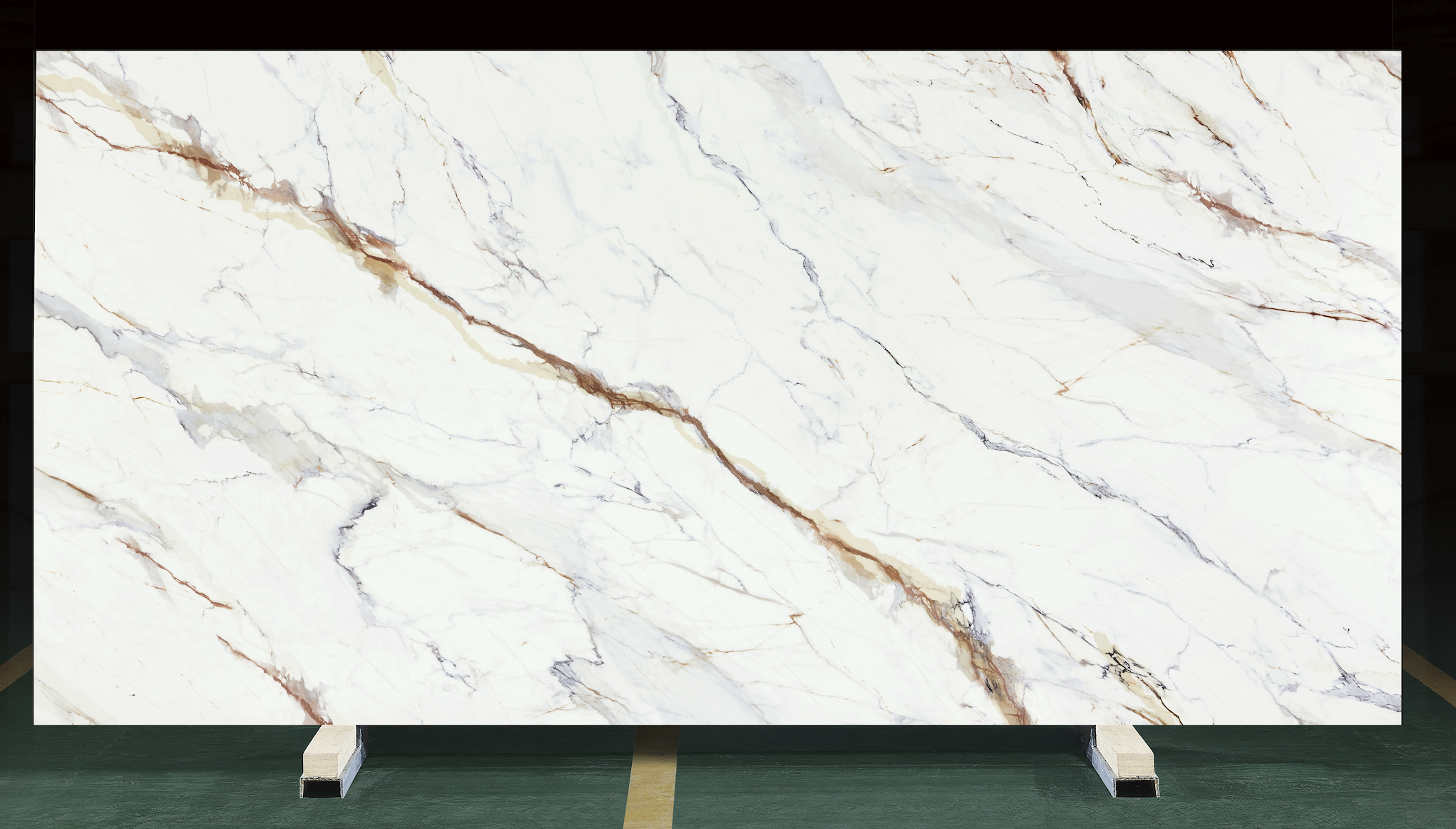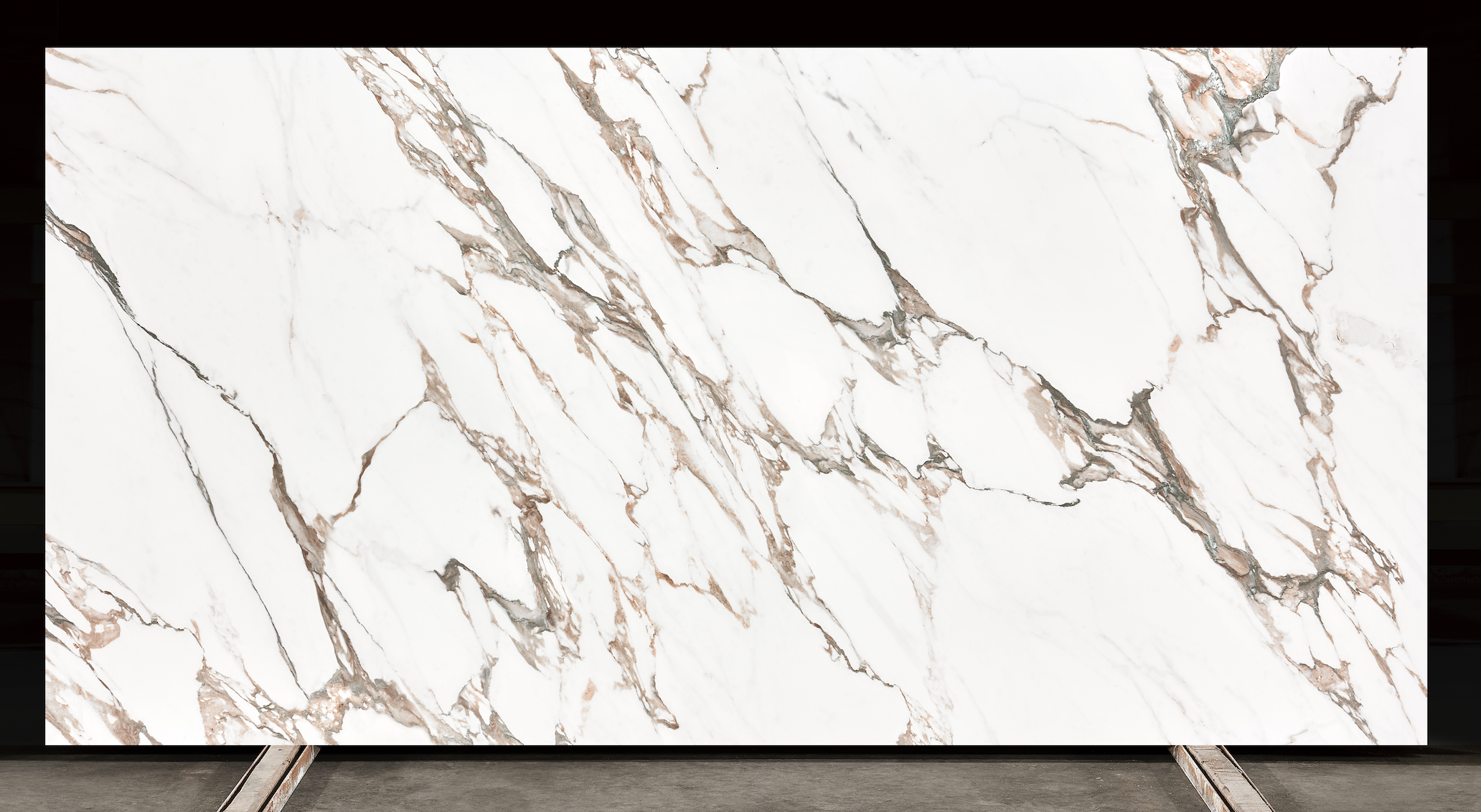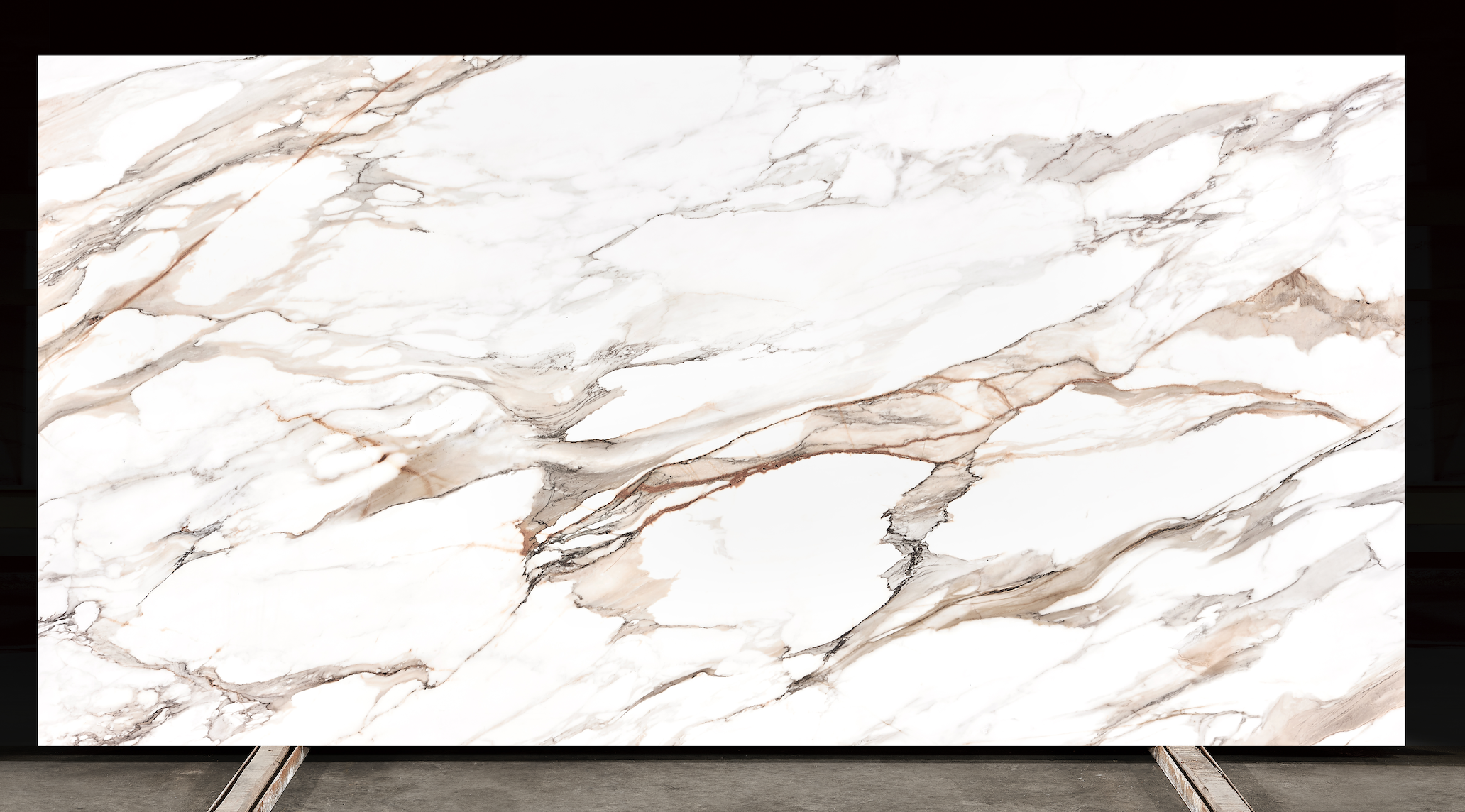Printed Quartz: An Emerging Trend
What is Printed Quartz?
It involves printing attractive patterns on the surface of standard quartz slabs, making them resemble natural stone.
The base is engineered quartz, and all the printed designs are only on the surface, not throughout the entire slab.
It is becoming increasingly popular and goes by various names online, including but not limited to: printed slabs or 3D printing slab and so on.
Pros & Cons of Printed Quartz?
Let's start with the advantages:
- Inherent Qualities of Quartz: Printed quartz retains all the benefits of engineered quartz, such as high resistance to wear and scratches, near-zero water absorption, stain resistance, easy maintenance, no waxing requirement, high hardness, good toughness, resistance to cracking, easy cutting and edge polishing, and seamless edge bonding for various edge profiles. Simply put, printed quartz offers all the advantages of engineered quartz.
- Design Flexibility: One significant advantage of printed quartz over regular quartz is the ability to print any design on its surface, especially complex patterns that mimic natural stone, so it is also called surface printed quartz. While traditional quartz strives to imitate natural stone, it often falls short in realism and aesthetic appeal. Printed quartz can directly print natural stone patterns onto its surface, achieving a more authentic look.
- Practicality in Use: When many stone fabricators hesitate to choose sintered stone, printed quartz emerges as a great alternative. Sintered stone is more prone to cracking and fragility compared to quartz and printed quartz. Additionally, sintered stone cannot be cut on-site and must be processed at the factory. In contrast, quartz can be cut on-site to accommodate measurement discrepancies during installation.
Now, let's discuss the disadvantages:
- Cost of Printing Materials: A primary drawback is the need for high-quality printing materials. Simply put, the ink used for printing must be of good quality, which can be expensive.
- Shared Drawbacks with Engineered Quartz: Printed quartz shares nearly all the disadvantages of engineered quartz. For example, improper placement can lead to warping of the slabs, just like regular quartz slabs.
- Perception of Authenticity: Despite how closely printed quartz can resemble natural stone, it is still a printed surface and not actual natural stone. This can affect the perception of authenticity.
Now, I will showcase a few images of printed quartz for your appreciation:
In Simple Terms:
1. Printed quartz can feature any design that consumers desire on its surface, similar to sintered stone. Yes, any design, because it is printed.
Printed quartz avoids the drawbacks of sintered stone, such as its tendency to crack and difficulty in processing, while retaining the benefits of quartz, including its good toughness, resistance to cracking, and ease of processing.
2. Printed quartz combines the advantages of both sintered stone and regular quartz, perfectly avoiding the limitations of quartz patterns and the fragility and processing difficulties of sintered stone.
It truly is a perfect choice for a new type of countertop material! However, it is only suitable for indoor walls and countertops, as printed quartz still uses unsaturated polyester resin as a binder and cannot be used outdoors.
Size and Moq
Printed quartz refers to designs printed directly onto the surface of standard quartz slabs.
Consequently, the dimensions of printed quartz are identical to those of normal quartz, typically available in sizes such as 320*160cm. In theory, it can be produced in any size that normal quartz can accommodate, as long as the printing equipment can handle the required dimensions.
Currently, the preferred size in the market is 320*160cm. However, I am confident that the manufacturers will soon be able to offer larger sizes, such as 330*200cm.
Regarding the minimum order quantity, it varies by manufacturer.
From my understanding, some factories are willing to accept a minimum order of 10 slabs per design due to the intense market competition and the emphasis on providing excellent service.
Which Manufacturers Produce Printed Quartz?
Existing quartz manufacturers can produce printed quartz by incorporating a specialized printer. This is not the same as an office printer; it's a large industrial machine.
I am currently assisting my international clients in sourcing printed quartz from the following locations:
- Quartz manufacturers in Guangdong Province
- Quartz manufacturers in Hebei Province
Additionally, there are suppliers of printed quartz in Fujian Province. If you plan to visit Xiamen or Shuitou Town in Nan'an City, the Stone Capital of China, please feel free to contact me. I would be delighted to take you to visit the printed quartz manufacturers in Fujian Province.
In short, I look forward to the opportunity to supply you with high-quality, China-made printed quartz slabs.
If you're interested in sourcing printed quartz from China, feel free to contact me at info@countertopkingdom.com.
- Countertop Kingdom
- Printed Quartz
